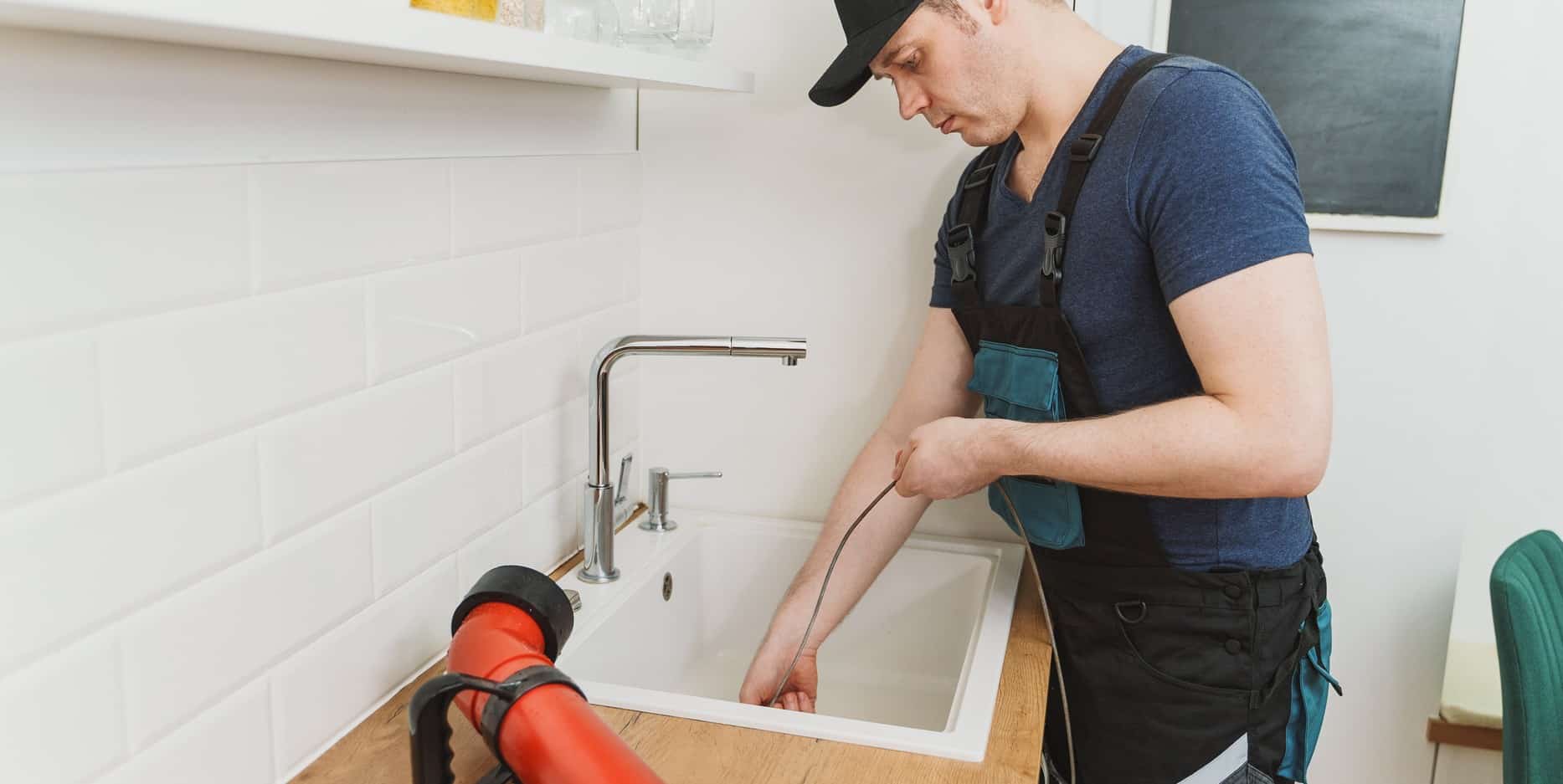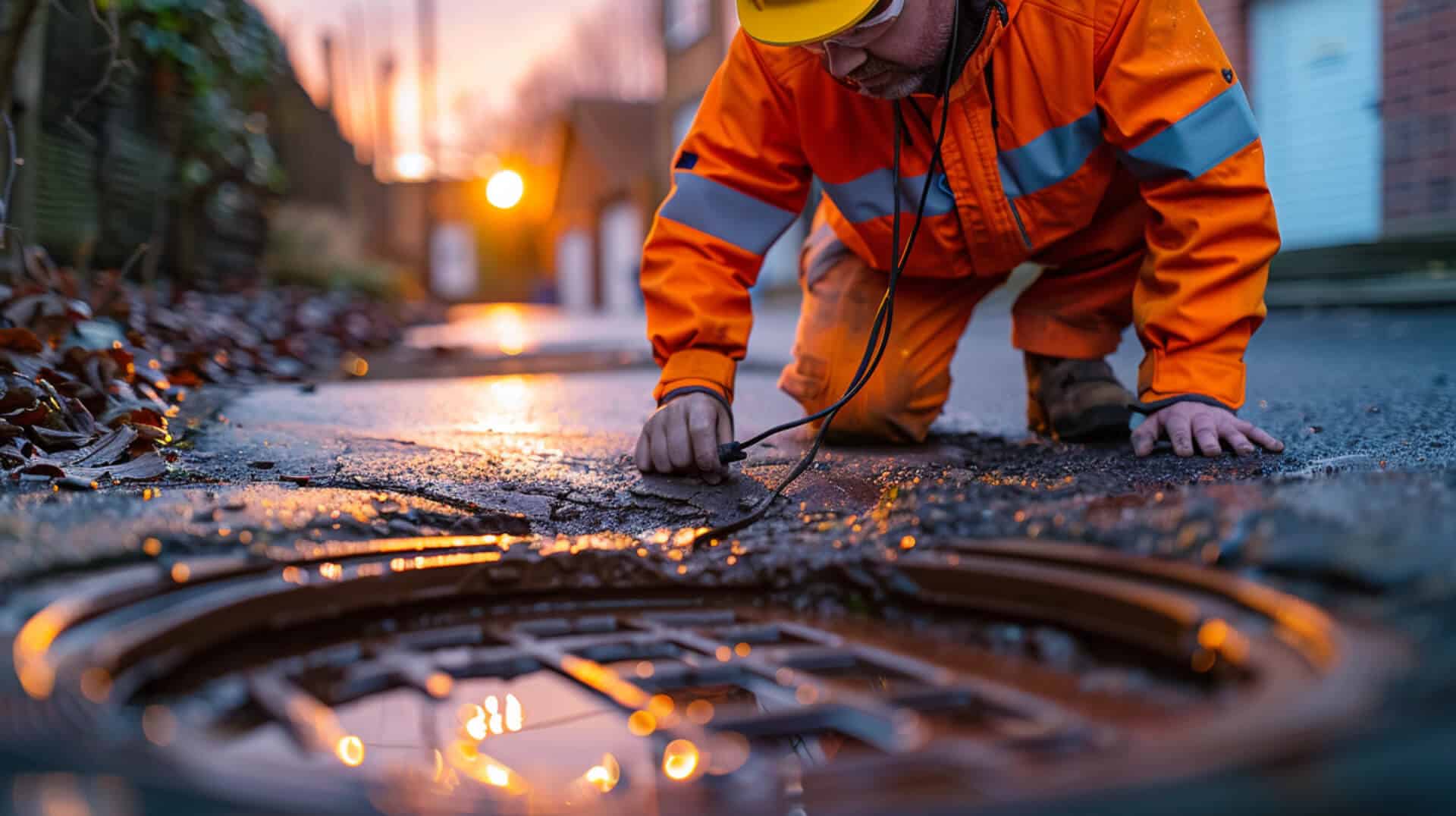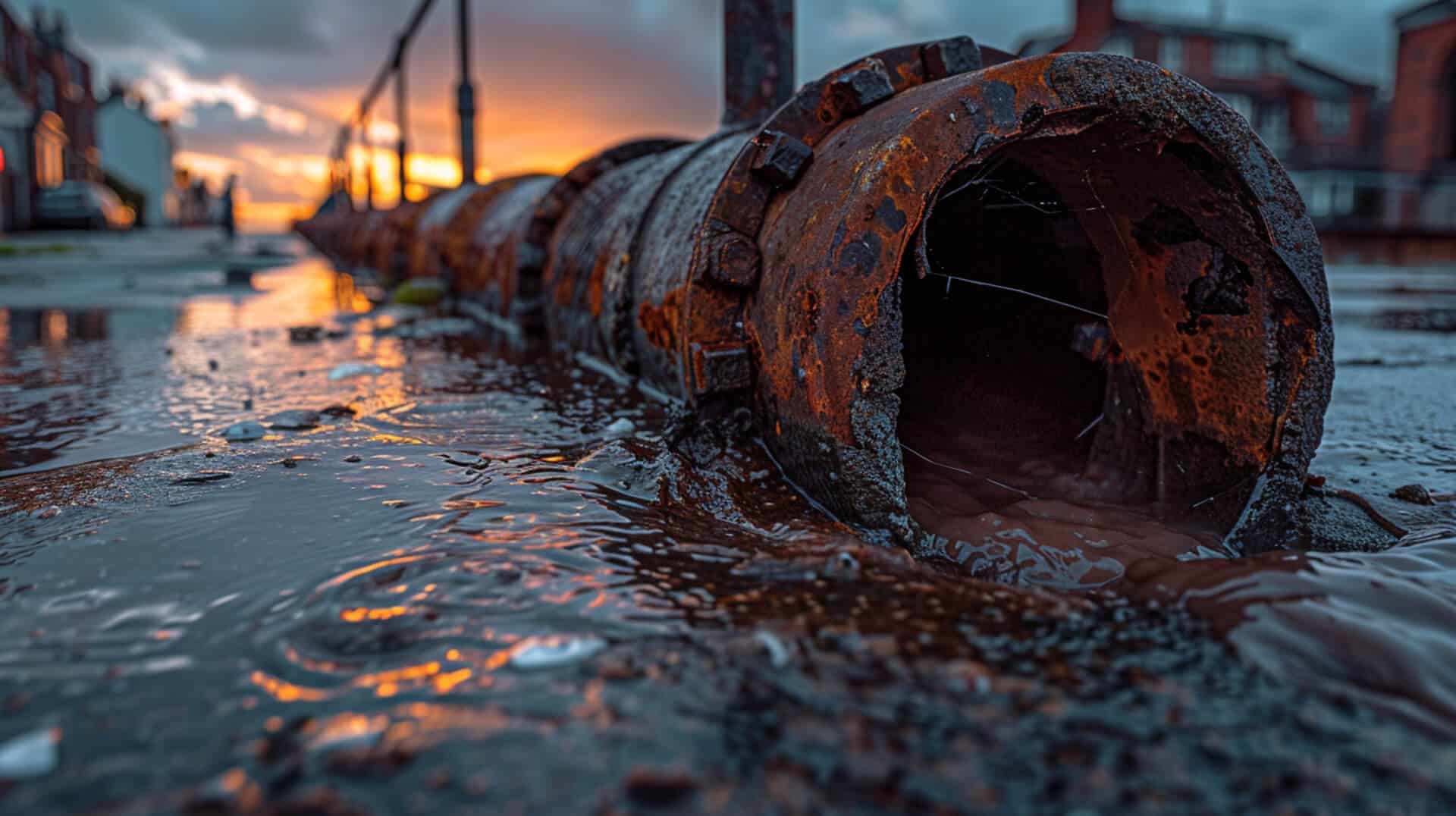 How Do Grease and Fat Contribute to Blocked Drains?
How Do Grease and Fat Contribute to Blocked Drains?
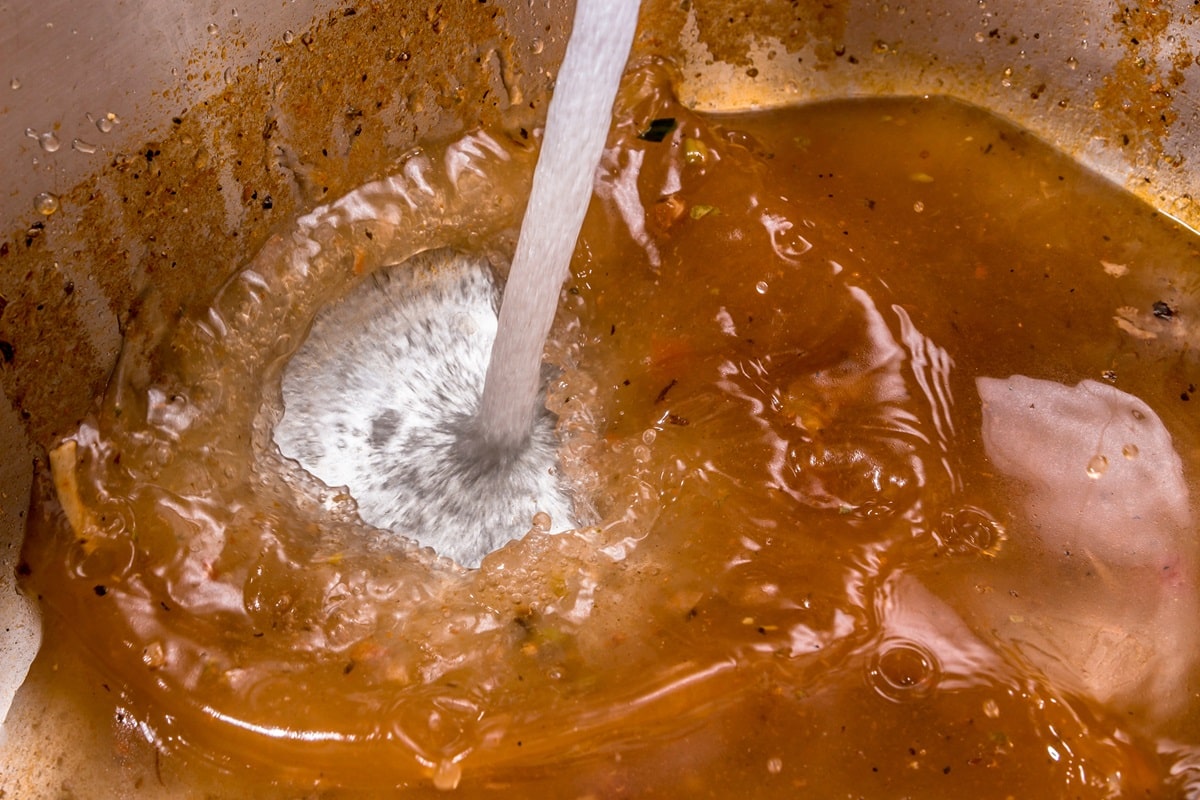
Blocked Drains: Grease and Fat
Blocked drains are a common issue faced by property owners, business owners, and facility managers. Understanding the primary causes of these blockages is essential for effective prevention and maintenance. Among the various causes, grease and fat are significant contributors to drain blockages.
Common Causes of Blocked Drains
Blocked drains can result from various factors, including the accumulation of fat, oil, and grease (FOG), hair, soap, food waste, tree roots, leaves, toiletries, wet wipes, coffee grounds, hard water, structural issues, and even rats. Each of these elements can contribute to the formation of clogs in drainage systems.
Significance of Grease and Fat in Drains
Grease and fat are particularly problematic because they solidify in pipes, leading to persistent and often severe blockages. When hot grease is poured down the drain, it cools and solidifies, adhering to the inner walls of the pipes. Over time, this build-up restricts water flow and traps other debris, exacerbating the blockage.
Impact on Property Owners and Businesses
Blocked drains caused by grease and fat can have several adverse effects on properties and businesses. These blockages can lead to slow draining, foul odours, water overflow, and unsanitary conditions. For businesses, especially those in the food service industry, such blockages can disrupt operations, lead to costly repairs, and even result in fines for non-compliance with health and safety regulations.
Scope of This Guide
This guide will cover the following aspects related to grease and fat blockages in drains:
- Understanding how grease and fat accumulate in drains
- Identifying common sources of grease and fat
- Mechanisms of blockage formation
- Signs of grease and fat blockages
- Immediate DIY solutions
- Professional services for severe blockages
- Preventive measures
- Health and environmental impacts
- Innovative solutions and technologies
- Cost analysis and maintenance schedules
By addressing these topics, the guide aims to provide comprehensive information to help you manage and prevent grease and fat blockages in your drainage systems.
Understanding Grease and Fat Accumulation
Grease and fat accumulation in drains is a common issue that can lead to significant blockages. Understanding how these substances build up and cause problems is essential for effective prevention and maintenance.
How Do Grease and Fat Accumulate in Drains?
Grease, oil, and fat (FOG) are common byproducts of cooking and food preparation. When these substances are washed down the drain, they do not remain in a liquid state. Instead, they cool and solidify, adhering to the inner walls of pipes. Over time, this build-up narrows the pipe’s diameter, restricting water flow and eventually leading to blockages.
What is the Process of Saponification in Pipes?
Saponification is a chemical reaction that occurs when fat, oil, and grease interact with alkaline substances, such as soap or cleaning agents, in the drain. This reaction produces soap-like compounds that further contribute to the build-up within the pipes. These compounds can be particularly stubborn and difficult to remove, exacerbating the blockage problem.
Why Are Kitchen Sinks Particularly Vulnerable to Grease and Fat Build-Up?
Kitchen sinks are especially prone to grease and fat accumulation due to the frequent disposal of cooking byproducts. Activities such as washing greasy dishes, disposing of cooking oil, and rinsing food scraps all contribute to the introduction of FOG into the drainage system. Without proper disposal methods, these substances quickly accumulate and cause blockages.
What Role Do Food Preparation Areas Play in Grease Accumulation?
Food preparation areas, especially in commercial kitchens and restaurants, generate large quantities of grease and fat. The use of deep fryers, grills, and other cooking equipment produces significant amounts of FOG. If not managed properly, this can lead to severe blockages in the drainage system. Implementing grease traps and regular maintenance can help mitigate this issue.
By understanding the mechanisms behind grease and fat accumulation, property owners and facility managers can take proactive steps to prevent blockages and maintain a healthy drainage system.
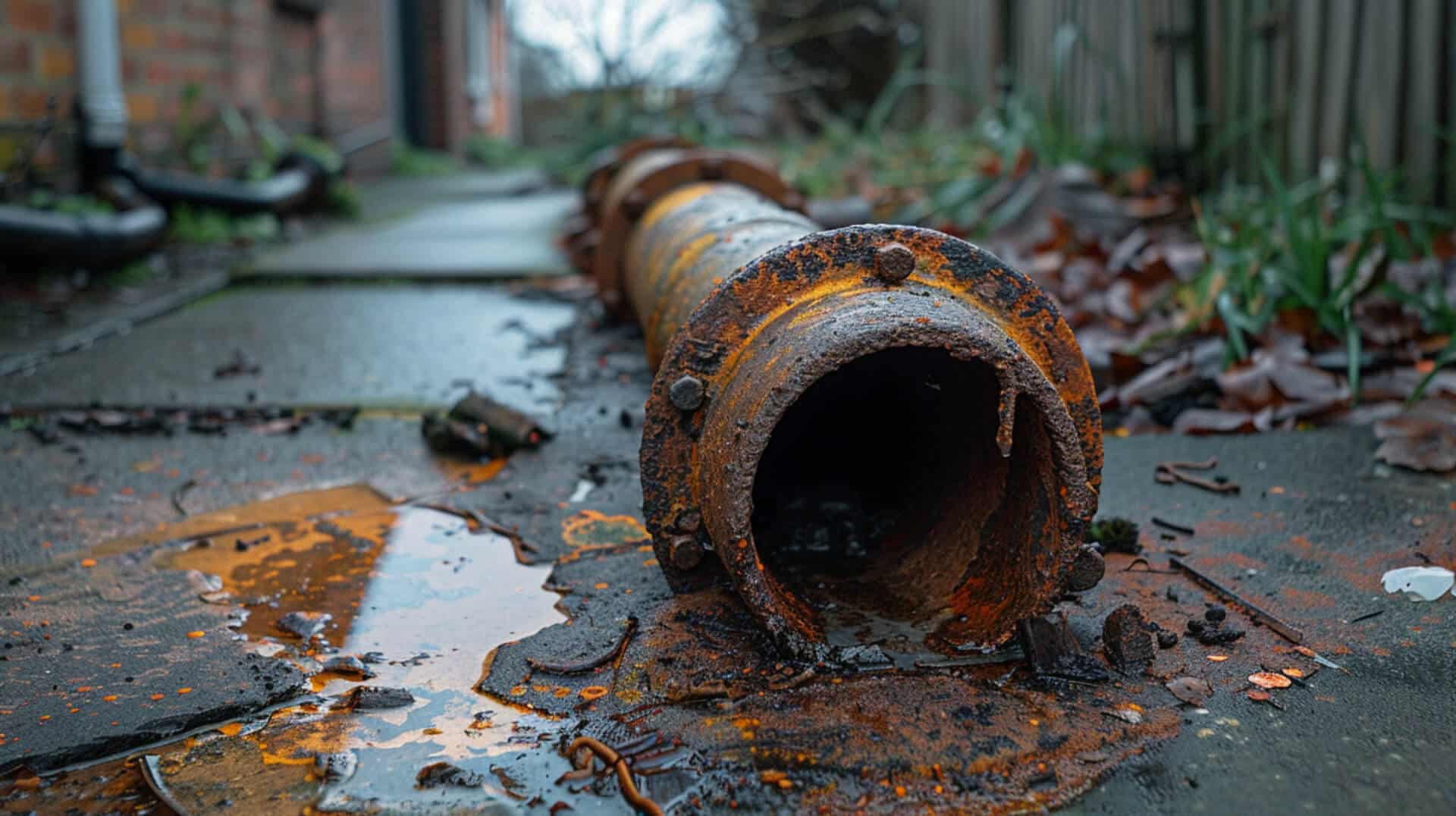
Sources of Grease and Fat in Drains
Understanding the sources of grease and fat in drains is crucial for effective prevention and maintenance. These substances can originate from various activities and locations, leading to significant blockages if not managed properly.
Common Sources in Residential Properties
In residential properties, grease and fat primarily come from kitchen activities. Common sources include:
- Cooking Oils: Used oils from frying and sauting.
- Food Scraps: Residual fats from meat, dairy, and other food items.
- Dishwashing: Grease and fat washed off from plates, pots, and pans.
Contribution from Restaurants and Commercial Kitchens
Restaurants and commercial kitchens generate large quantities of grease and fat due to their high-volume cooking operations. Key contributors include:
- Deep Fryers: Produce significant amounts of used cooking oil.
- Grills and Ovens: Generate grease that can be washed into drains during cleaning.
- Food Preparation Areas: Accumulate fats from various cooking processes.
Types of Food Waste Contributing to Blockages
Certain types of food waste are more likely to contribute to grease and fat blockages. These include:
- Meat and Dairy Products: High-fat content that solidifies in pipes.
- Sauces and Gravies: Contain oils and fats that can accumulate in drains.
- Baked Goods: Butter and shortening residues.
Impact of Improper Disposal Practices
Improper disposal practices exacerbate the problem of grease and fat blockages. Common issues include:
- Pouring Grease Down the Drain: Directly introduces fats into the drainage system.
- Lack of Grease Traps: In commercial settings, the absence of grease traps allows fats to enter the plumbing.
- Inadequate Cleaning: Failure to properly clean grease traps and drains leads to build-up.
By identifying and addressing these sources, property owners and facility managers can take proactive steps to prevent grease and fat blockages in their drainage systems.
Mechanism of Blockage Formation
Understanding how grease and fat cause blockages in pipes is essential for effective prevention and maintenance. This section explains the process and factors contributing to the formation of blockages.
How Does Grease Solidify and Cause Blockages in Pipes?
When grease, oil, and fat (FOG) are washed down the drain, they do not remain in a liquid state. As these substances cool, they solidify and adhere to the inner walls of pipes. This build-up gradually narrows the pipe’s diameter, restricting water flow and eventually leading to blockages.
What Other Materials Interact with Grease to Form Clogs?
Grease and fat can interact with various other materials to form clogs. Common contributors include:
- Food Particles: Residual food particles can stick to the grease, creating a more substantial blockage.
- Soap Scum: Soap can combine with grease to form a thick, sticky residue.
- Hair: Hair can become entangled in the grease, exacerbating the blockage.
How Do Temperature Changes Affect Grease and Fat in Drains?
Temperature changes play a significant role in the formation of grease and fat blockages. When hot grease is poured down the drain, it remains liquid until it cools. As it cools, it solidifies and adheres to the pipe walls. Repeated cycles of heating and cooling can lead to significant build-up over time.
What Are the Stages of Blockage Development?
The development of a blockage typically occurs in stages:
- Initial Build-Up: Small amounts of grease and fat begin to adhere to the pipe walls.
- Accumulation: Over time, more grease, fat, and other materials accumulate, narrowing the pipe’s diameter.
- Partial Blockage: The build-up restricts water flow, causing slow draining and other symptoms.
- Complete Blockage: The pipe becomes fully blocked, preventing water flow and leading to overflow and potential damage.
By understanding these mechanisms, property owners and facility managers can take proactive steps to prevent and address grease and fat blockages in their drainage systems.
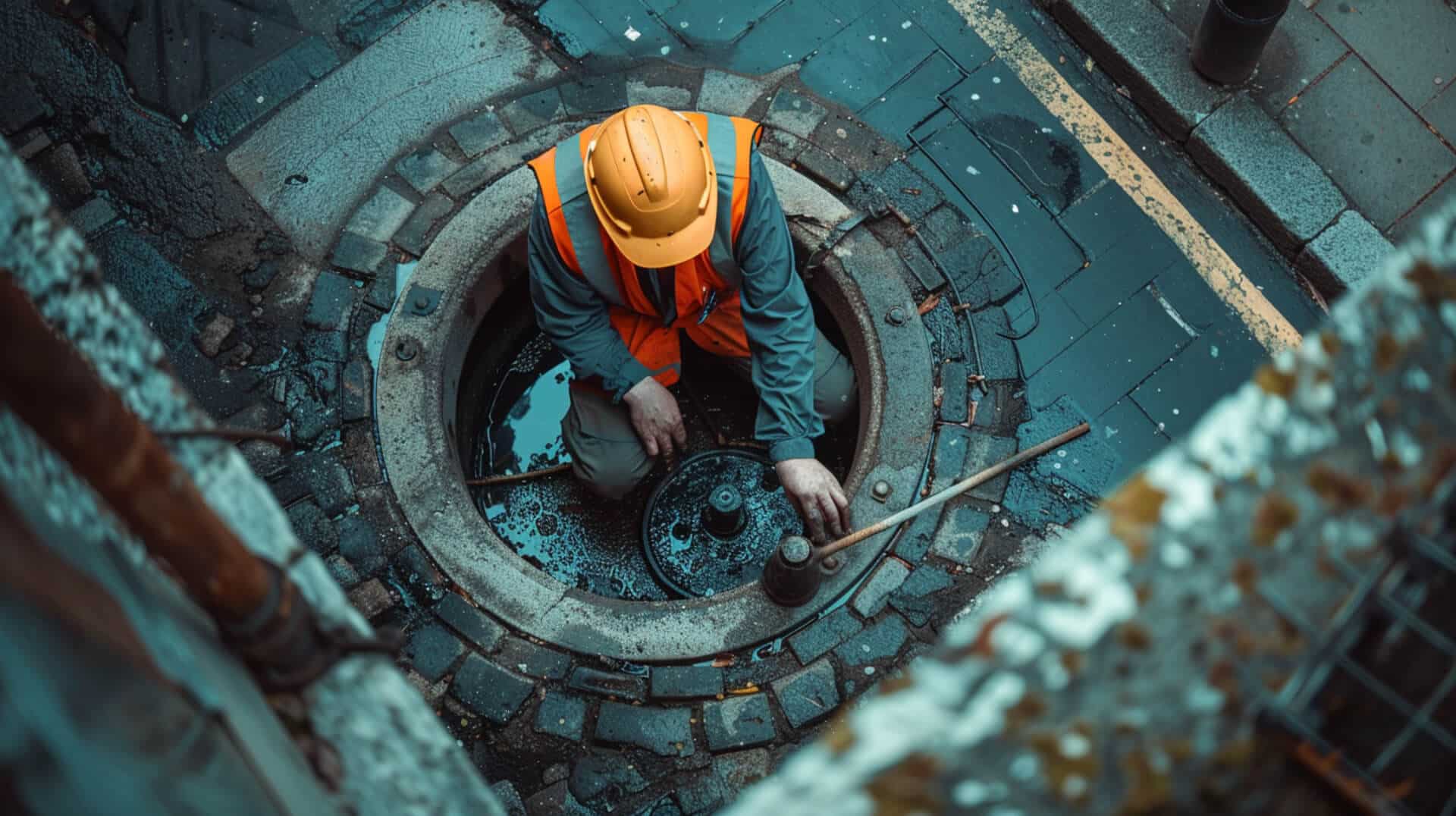
Signs of Grease and Fat Blockages
Identifying the early signs of grease and fat blockages in drains is crucial for timely intervention and prevention of more severe issues. Recognising these symptoms can help property owners and facility managers take appropriate action before the problem escalates.
Early Signs of a Grease and Fat Blockage
Grease and fat blockages often present several early warning signs. Being aware of these indicators can help in addressing the issue promptly:
- Slow Draining Water: One of the most common signs of a developing blockage is water draining slowly from sinks, bathtubs, or showers. This occurs because the build-up of grease and fat narrows the pipe’s diameter, restricting water flow.
How Foul Smells Indicate a Blockage
Foul odours emanating from drains are a strong indicator of a blockage. As grease and fat accumulate, they can trap food particles and other debris, leading to bacterial growth and unpleasant smells. These odours are often noticeable in kitchen sinks and bathroom drains.
What Slow Draining Water Signifies
Slow draining water is a clear sign that there is a partial blockage in the pipes. This symptom indicates that grease and fat have started to accumulate, reducing the pipe’s capacity to allow water to flow freely. If left unaddressed, this can lead to a complete blockage.
Water Overflow and Back Gurgles as Symptoms
Water overflow and back gurgles are more severe symptoms of a blockage. When water cannot pass through the pipes due to a significant build-up of grease and fat, it may back up into sinks, bathtubs, or toilets. Gurgling sounds from drains indicate trapped air caused by the blockage, which disrupts the normal flow of water.
By recognising these signs, property owners and facility managers can take proactive measures to address grease and fat blockages, ensuring the proper functioning of their drainage systems.
Immediate DIY Solutions for Grease and Fat Blockages
Addressing grease and fat blockages promptly can prevent more severe issues. Several do-it-yourself (DIY) methods can be effective for minor blockages.
How Can Boiling Water Help Clear Minor Blockages?
Boiling water is a simple and effective method for clearing minor grease and fat blockages. The high temperature of the water can melt and dislodge the solidified grease, allowing it to flow through the pipes. To use this method:
- Boil Water: Heat a kettle or pot of water until it reaches a rolling boil.
- Pour Slowly: Carefully pour the boiling water directly into the drain in stages, allowing it to work through the blockage.
- Repeat if Necessary: For stubborn blockages, repeat the process several times.
What is the Effectiveness of Baking Soda and Vinegar for Grease Clogs?
Baking soda and vinegar create a chemical reaction that can help break down grease clogs. This method is both effective and environmentally friendly. To use this method:
- Pour Baking Soda: Pour about half a cup of baking soda into the drain.
- Add Vinegar: Follow with half a cup of vinegar. The mixture will fizz and bubble.
- Wait: Allow the mixture to sit for 15-30 minutes to break down the grease.
- Flush with Boiling Water: Finish by pouring boiling water down the drain to clear the loosened debris.
How Does Coke Work to Break Down Blockages?
Coke contains phosphoric acid, which can help break down grease and fat blockages. To use this method:
- Pour Coke: Pour a bottle of Coke (not diet) into the drain.
- Let Sit: Allow it to sit for 1-24 hours to dissolve the blockage.
- Flush with Boiling Water: After the waiting period, flush the drain with boiling water to clear the debris.
When Should a Plunger Be Used for Grease and Fat Blockages?
A plunger can be effective for dislodging minor blockages caused by grease and fat. To use a plunger:
- Position the Plunger: Place the plunger over the drain, ensuring a good seal.
- Plunge Vigorously: Push and pull the plunger in a rapid motion to create suction and pressure.
- Check for Drainage: Remove the plunger and check if the water drains properly. Repeat if necessary.
By using these DIY methods, property owners and facility managers can address minor grease and fat blockages effectively, maintaining the proper functioning of their drainage systems.
Professional Services for Severe Blockages
When DIY methods are insufficient to clear severe blockages caused by grease and fat, professional services are necessary. These services employ advanced techniques and equipment to ensure thorough and effective blockage removal.
What is High-Pressure Water Jetting and How Does It Work?
High-pressure water jetting is a method used to clear stubborn blockages in drains. This technique involves using a high-pressure hose to direct powerful jets of water into the pipes. The force of the water dislodges and flushes away accumulated grease, fat, and other debris, restoring normal flow. This method is highly effective for severe blockages and is commonly used by professional drainage services.
How Can a CCTV Drain Survey Help Diagnose Blockages?
A CCTV drain survey involves using a small, waterproof camera to inspect the inside of the drainage system. The camera is inserted into the pipes and transmits real-time video footage to a monitor. This allows professionals to accurately diagnose the location and cause of blockages. By identifying the exact problem, appropriate measures can be taken to clear the blockage and prevent future issues.
What Are Enzyme Cleaners and How Do They Break Down Organic Material?
Enzyme cleaners are specialised cleaning agents that use natural enzymes to break down organic material in drains. These enzymes target and digest grease, fat, and other organic substances, converting them into water and carbon dioxide. Enzyme cleaners are environmentally friendly and effective for maintaining clean and free-flowing drains. They are often used as a preventive measure to reduce the risk of blockages.
When is Drain Rodding Necessary for Clearing Blockages?
Drain rodding is a mechanical method used to clear blockages in pipes. It involves using flexible rods that are inserted into the drain and manually pushed through the blockage. The rods can be equipped with various attachments to break up and remove the obstruction. Drain rodding is particularly useful for removing solid blockages and is often employed when other methods, such as high-pressure water jetting, are not suitable.
By utilising these professional services, property owners and facility managers can effectively address severe grease and fat blockages, ensuring the proper functioning of their drainage systems.
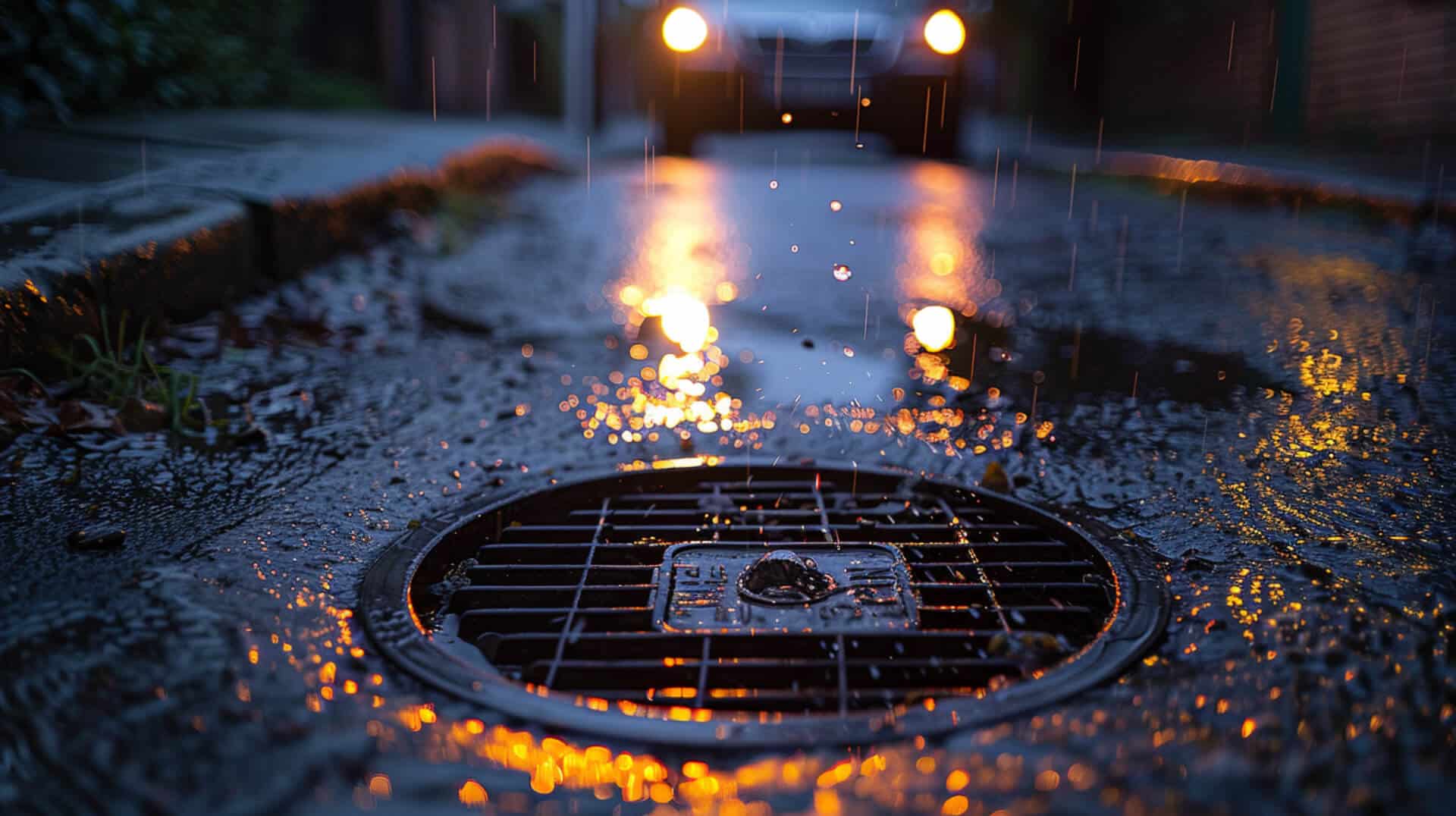
Preventive Measures for Grease and Fat Blockages
Preventing grease and fat blockages in drains requires consistent and effective practices. Implementing these measures can help maintain a clear and functional drainage system.
How Can Proper Disposal of Grease and Fat Prevent Blockages?
Proper disposal of grease and fat is crucial in preventing blockages. Instead of pouring these substances down the drain, consider the following methods:
- Use Containers: Collect used cooking oil and grease in a container and dispose of it in the trash.
- Wipe Pans: Before washing, wipe greasy pans with a paper towel to remove excess fat.
- Cool and Solidify: Allow grease to cool and solidify, then scrape it into the trash.
What Are the Benefits of Using Drain Guards?
Drain guards are simple devices that can significantly reduce the risk of blockages. They work by trapping debris and preventing it from entering the drain. Benefits include:
- Debris Prevention: Stops food particles, hair, and other debris from entering the pipes.
- Easy Maintenance: Drain guards are easy to clean and maintain.
- Cost-Effective: Inexpensive solution to prevent costly blockages.
How Often Should Regular Maintenance and Inspections Be Conducted?
Regular maintenance and inspections are essential for preventing grease and fat blockages. Recommended practices include:
- Monthly Inspections: Check drains and pipes for signs of build-up.
- Quarterly Cleaning: Use enzyme cleaners or boiling water to maintain clear pipes.
- Annual Professional Inspections: Schedule a professional inspection to identify and address potential issues.
What Are the Best Practices for Disposing of Food Waste and Non-Flushable Items?
Proper disposal of food waste and non-flushable items is critical in preventing blockages. Best practices include:
- Use Trash Bins: Dispose of food scraps, coffee grounds, and non-biodegradable items in the trash.
- Compost: Compost organic waste when possible.
- Avoid Flushing Non-Flushables: Do not flush items like wet wipes, cotton swabs, and sanitary products.
By following these preventive measures, property owners and facility managers can effectively reduce the risk of grease and fat blockages, ensuring a well-maintained drainage system.
Health and Environmental Impacts of Grease and Fat Blockages
Blocked drains caused by grease and fat can have significant health and environmental consequences. Understanding these impacts is essential for property owners and facility managers to take appropriate preventive measures.
Potential Health Hazards Associated with Blocked Drains
Blocked drains can create unsanitary conditions that pose health risks. Common hazards include:
- Bacterial Growth: Stagnant water and trapped organic material can lead to the growth of harmful bacteria, which can cause infections and illnesses.
- Pest Infestations: Blocked drains can attract pests such as rats and insects, which can carry diseases and contaminate living spaces.
- Foul Odours: The decomposition of trapped waste produces unpleasant smells, which can affect indoor air quality and overall hygiene.
How Do Grease and Fat Blockages Affect the Environment?
Improper disposal of grease and fat can have detrimental environmental effects. Key impacts include:
- Water Pollution: When grease and fat enter the drainage system, they can eventually reach natural water bodies, leading to pollution and harm to aquatic life.
- Soil Contamination: Blockages can cause sewage overflows, contaminating soil and potentially affecting plant life and groundwater quality.
- Increased Waste: The need for frequent cleaning and maintenance of blocked drains generates additional waste, contributing to environmental degradation.
Legal Responsibilities of Property Owners Regarding Blockages
Property owners have legal obligations to maintain their drainage systems and prevent blockages. Responsibilities include:
- Regular Maintenance: Ensuring that drains are regularly inspected and cleaned to prevent blockages.
- Proper Disposal: Adhering to guidelines for the disposal of grease, fat, and other waste materials.
- Compliance with Regulations: Following local regulations and standards for drainage system maintenance and waste disposal.
How Can Improper Grease Disposal Lead to Fines and Penalties?
Improper disposal of grease and fat can result in legal consequences. Potential penalties include:
- Fines: Property owners may be fined for causing blockages that lead to environmental damage or public health risks.
- Liability for Damages: Owners may be held liable for damages caused by blockages, such as sewage overflows and contamination.
- Enforcement Actions: Regulatory authorities may take enforcement actions against property owners who fail to comply with waste disposal regulations.
By understanding the health and environmental impacts of grease and fat blockages, property owners and facility managers can take proactive steps to ensure compliance with regulations and maintain a safe and healthy environment.
Innovative Solutions and Technologies
Innovative solutions and technologies are essential for effectively managing grease and fat build-up in drains. These advancements help prevent blockages and maintain a functional drainage system.
What New Methods Are Available for Preventing Grease Build-Up?
Several new methods have been developed to prevent grease build-up in drains. These include:
- Biological Treatments: Use of bacteria and enzymes to break down grease and fat naturally.
- Advanced Grease Traps: Improved designs that capture more grease and are easier to maintain.
- Automated Grease Removal Systems: Devices that automatically separate and remove grease from wastewater.
How Do Industrial Maintenance Products Help in Regular Maintenance?
Industrial maintenance products are designed to keep drains clear and prevent blockages. These products include:
- Enzyme Cleaners: Break down organic material, including grease and fat, to keep pipes clear.
- Caustic Granules: Dissolve grease and fat build-up, preventing blockages.
- High-Pressure Water Jetting Equipment: Used for regular cleaning to remove any accumulated grease and debris.
What Role Do Grease Traps Play in Commercial Kitchens?
Grease traps are essential in commercial kitchens to prevent grease from entering the drainage system. Their roles include:
- Capturing Grease: Traps grease and fat before they enter the pipes.
- Reducing Blockages: Prevents grease build-up in the drainage system, reducing the risk of blockages.
- Compliance: Helps businesses comply with local regulations regarding grease disposal.
How Can Technology Improve the Management of Grease and Fat in Drains?
Technology plays a significant role in improving the management of grease and fat in drains. Key technological advancements include:
- CCTV Drain Surveys: Use of cameras to inspect and diagnose blockages, allowing for targeted interventions.
- Automated Monitoring Systems: Sensors that detect grease levels and alert when maintenance is needed.
- Smart Grease Traps: Equipped with sensors and automated cleaning mechanisms to enhance efficiency.
By adopting these innovative solutions and technologies, property owners and facility managers can effectively manage grease and fat build-up, ensuring a well-maintained and functional drainage system.
Cost Analysis and Maintenance Schedules
Understanding the costs associated with different unblocking methods and the benefits of regular maintenance is crucial for property owners and facility managers. This section provides a detailed analysis of these aspects.
How Do the Costs of Different Unblocking Methods Compare?
The costs of unblocking methods can vary significantly based on the severity of the blockage and the method used. Common methods include:
- Boiling Water: Minimal cost, primarily for minor blockages.
- Baking Soda and Vinegar: Low cost, effective for small clogs.
- Chemical Cleaners: Moderate cost, suitable for nearby blockages.
- Professional Services: Higher cost, necessary for severe blockages. Services like high-pressure water jetting and CCTV drain surveys can be more expensive but are highly effective.
What Are the Long-Term Benefits of Regular Maintenance?
Regular maintenance offers several long-term benefits, including:
- Cost Savings: Prevents severe blockages that require expensive emergency services.
- Extended Lifespan of Pipes: Reduces wear and tear on the drainage system.
- Improved Efficiency: Ensures drains function optimally, reducing the risk of slow draining and foul odours.
How Can a Maintenance Schedule Prevent Future Blockages?
Implementing a maintenance schedule can effectively prevent future blockages. Recommended practices include:
- Monthly Inspections: Check for early signs of build-up.
- Quarterly Cleaning: Use enzyme cleaners or boiling water to maintain clear pipes.
- Annual Professional Inspections: Schedule professional services to identify and address potential issues.
What Are the Cost Implications of Severe Blockages and Emergency Services?
Severe blockages and emergency services can be costly. Potential expenses include:
- Emergency Call-Out Fees: Higher charges for immediate response services.
- Repair Costs: Expenses for repairing damaged pipes or drainage systems.
- Health and Environmental Costs: Potential fines and penalties for causing blockages that lead to environmental damage or health hazards.
By understanding these cost factors and implementing a regular maintenance schedule, property owners and facility managers can effectively manage their drainage systems and avoid costly blockages.
Key Takeaways from This Guide
Understanding the common causes of blocked drains, particularly those related to grease and fat, is essential for effective prevention and maintenance. This guide has covered various aspects, including the mechanisms of blockage formation, signs of blockages, DIY solutions, professional services, preventive measures, and the health and environmental impacts of grease and fat blockages.
Implementing Preventive Measures
Property owners and businesses can implement several preventive measures to avoid grease and fat blockages:
- Proper Disposal: Avoid pouring grease and fat down the drain. Use containers to collect and dispose of these substances in the trash.
- Drain Guards: Instal drain guards to prevent debris from entering the pipes.
- Regular Maintenance: Conduct regular inspections and cleanings using enzyme cleaners or boiling water.
- Grease Traps: In commercial kitchens, use grease traps to capture grease before it enters the drainage system.
Importance of Regular Maintenance
Regular maintenance is crucial for avoiding blockages and ensuring the proper functioning of the drainage system. Benefits include:
- Cost Savings: Prevents severe blockages that require expensive emergency services.
- Extended Lifespan of Pipes: Reduces wear and tear on the drainage system.
- Improved Efficiency: Ensures drains function optimally, reducing the risk of slow draining and foul odours.
Finding Professional Assistance
For severe blockages or regular maintenance, professional assistance is often necessary. Services include:
- High-Pressure Water Jetting: Effective for clearing stubborn blockages.
- CCTV Drain Surveys: Diagnose and locate blockages accurately.
- Enzyme Cleaners: Break down organic material in the pipes.
- Drain Rodding: Mechanical method for clearing blockages.
By following these guidelines and seeking professional help when needed, property owners and facility managers can effectively manage their drainage systems and prevent grease and fat blockages.
